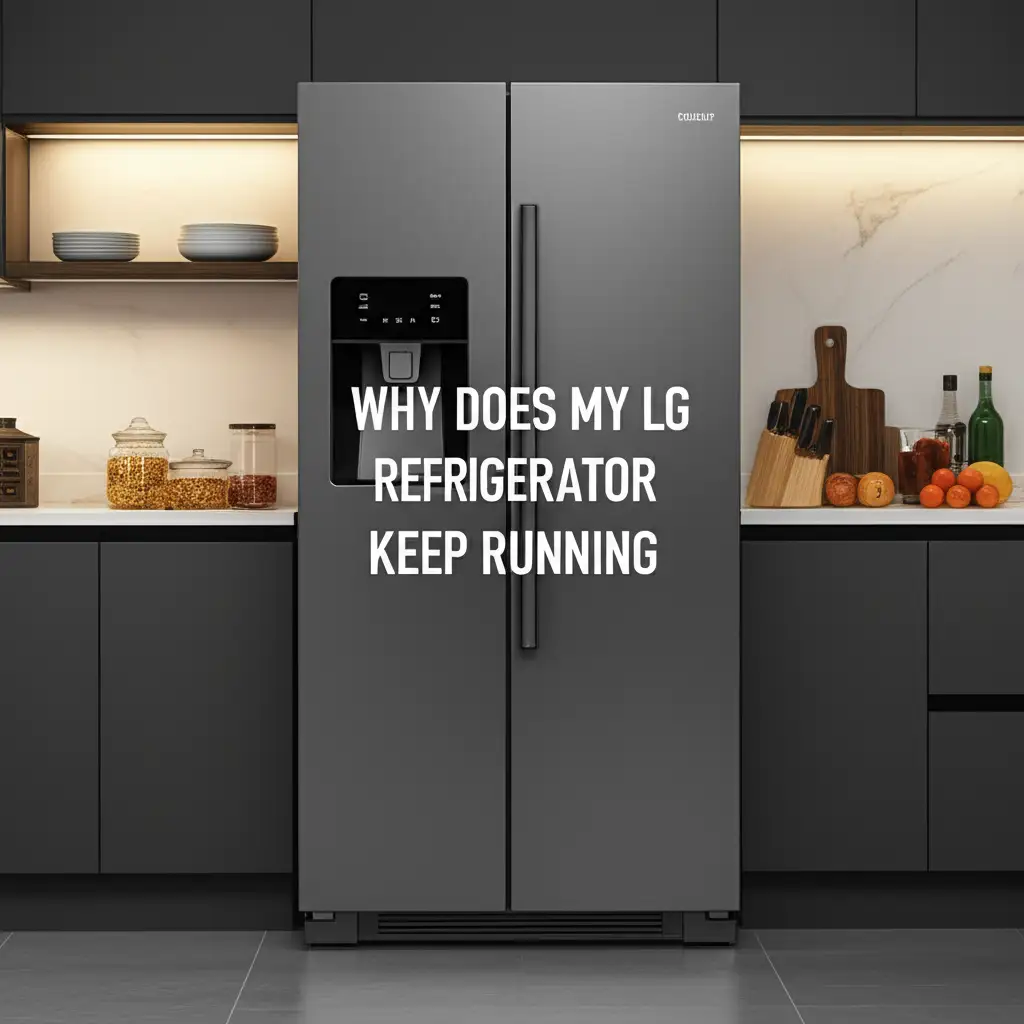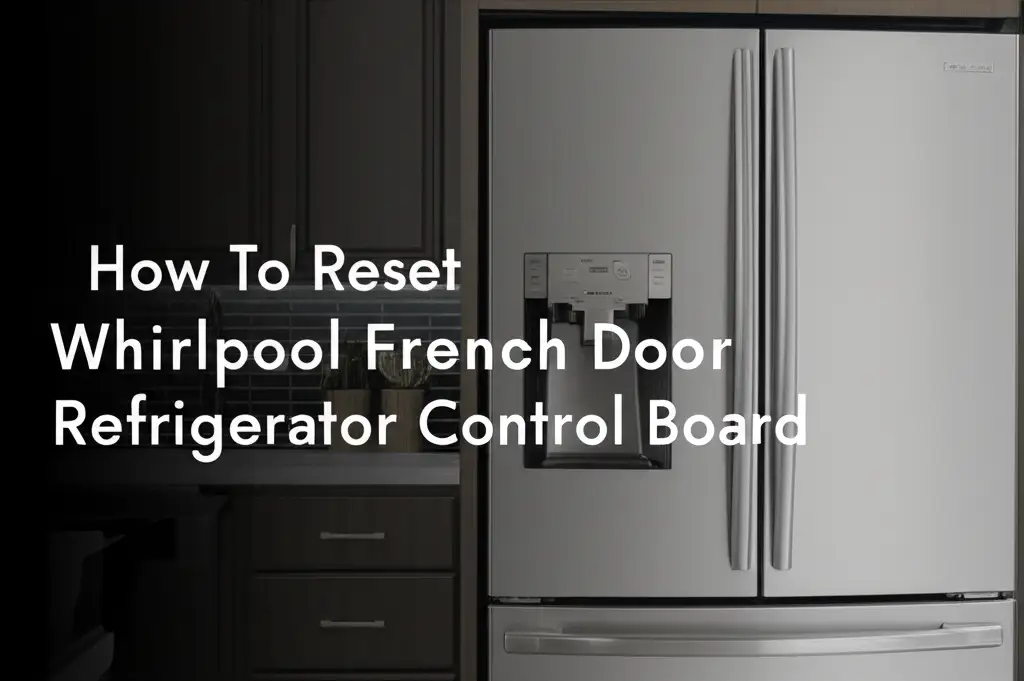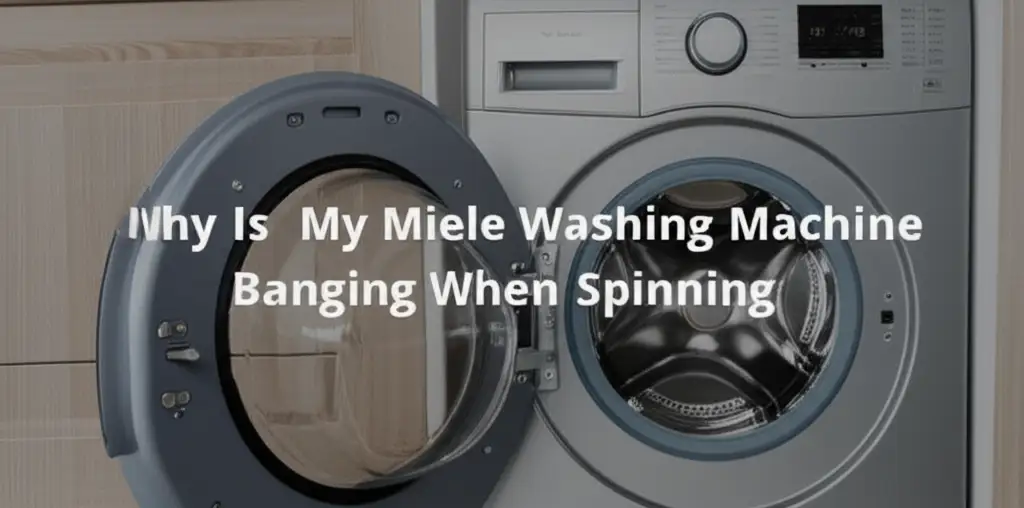· Davia Murnell · Home Appliance Repair · 16 min read
Why Does My Lg Refrigerator Keep Running

LG Refrigerator Running Constantly? Find Out Why!
Is your LG refrigerator running almost all the time? You are not alone. Many homeowners notice their LG refrigerator running more than expected. This can be worrying for several reasons. Constant running may signal an underlying problem. It can also lead to higher energy bills. We understand you want your refrigerator to work correctly.
This guide will help you understand why your LG refrigerator keeps running. We will cover normal operation. We will also explore common issues that cause constant running. You will learn about dirty coils, bad door seals, and faulty parts. We will provide clear steps for troubleshooting each problem. Our goal is to help you diagnose and fix the issue. Sometimes, a simple cleaning is all it takes. Other times, a part might need replacing. Let’s find out what is causing your LG refrigerator to work overtime.
Takeaway:
- Normal Operation: Refrigerators cycle on and off; constant running is often abnormal.
- Common Culprits: Dirty coils, faulty door seals, and temperature issues are frequent causes.
- Maintenance: Regular cleaning and inspection can prevent many problems.
- Troubleshooting: You can often identify and fix minor issues yourself.
- Professional Help: Know when to call an expert for complex repairs.
Your LG refrigerator might keep running due to external factors like room temperature, internal issues such as dirty condenser coils or faulty door seals, or malfunctioning components like the thermostat, defrost system, or compressor, which require consistent operation to maintain cooling.
Understanding Normal Refrigerator Operation & Cycle Patterns
Your LG refrigerator does not run continuously under normal conditions. It cycles on and off throughout the day. This cycling is how it maintains a steady internal temperature. The compressor turns on when the temperature rises above a set point. It then runs to cool the interior. Once the target temperature is reached, the compressor turns off. This is a normal and efficient process.
The length of these cycles varies. It depends on several factors. How often you open the door plays a big role. The amount of food inside also matters. The ambient temperature of your kitchen affects it too. In a hot room, your refrigerator will run more often. It needs more energy to keep cool. New refrigerators are often more energy-efficient. They might run for longer periods when they do cycle on. However, their total energy consumption is lower. This is because they are better insulated. They lose less cold air. This means fewer cycles overall. Understanding this normal behavior is the first step. It helps you tell if your LG refrigerator is truly running excessively.
A healthy refrigerator should have noticeable periods of quiet. These quiet times indicate the compressor is off. If you rarely hear silence, then something might be wrong. Modern LG refrigerators use advanced cooling systems. Their linear compressors are designed for efficiency. They can also adjust their speed. This allows them to run at lower speeds for longer times. This helps maintain stable temperatures. But even with these features, they should still cycle off. Persistent running means it is working too hard. It is struggling to maintain the desired temperature. We will look at reasons why this struggle occurs next.
External Factors & Placement Issues
External factors in your home can significantly impact your LG refrigerator’s running time. The environment around your fridge directly affects its efficiency. If your kitchen is very warm, the refrigerator has to work harder. It needs to expel more heat to stay cool inside. This means the compressor runs more often or for longer periods. This is a common reason for constant running. Ensure your kitchen is not excessively hot.
The placement of your LG refrigerator also matters. Do not place it too close to heat sources. Ovens, dishwashers, and even direct sunlight generate heat. If your fridge is next to one of these, it absorbs that heat. This forces the compressor to run more to compensate. Make sure there is enough space around the refrigerator. LG recommends specific clearances for air circulation. This space allows heat from the condenser coils to dissipate properly. Blocked airflow makes the compressor work harder. It keeps running trying to cool down.
How you use your refrigerator also impacts its runtime. Frequent door openings let cold air escape. Warm air rushes in to replace it. Each time this happens, the compressor must activate. It works to bring the internal temperature back down. Try to minimize how often you open the door. Also, do not keep the door open for extended periods. Overfilling your refrigerator can also be an issue. Packing it too tightly restricts airflow inside. Cold air cannot circulate effectively. This creates warm spots. The refrigerator then tries to cool these spots. This leads to continuous running. A properly loaded fridge allows air to flow freely. This helps maintain an even temperature. Checking these external factors is a simple first step in troubleshooting.
Dirty Condenser Coils & Faulty Fans
Dirty condenser coils are a very common reason your LG refrigerator might run non-stop. These coils are usually located on the back or underneath your refrigerator. Their job is to release heat from the refrigerant. This heat removal is crucial for the cooling process. Over time, dust, pet hair, and debris accumulate on these coils. This layer of grime acts as an insulator. It prevents heat from escaping efficiently. When heat gets trapped, the refrigerator cannot cool properly. It works harder and longer to try and reach the set temperature. This results in the compressor running continuously.
Cleaning the condenser coils is a simple maintenance task. It can solve many running issues. You should do this at least once or twice a year. First, unplug your LG refrigerator for safety. Then, locate the coils. You might need to pull the refrigerator out from the wall. Some models have a kick plate at the bottom front that you can remove. Use a vacuum cleaner with a brush attachment to gently remove the dust. You can also use a coil brush for stubborn grime. Ensure all debris is gone. This improves heat transfer.
Faulty condenser or evaporator fan motors can also cause constant running. The condenser fan helps cool the condenser coils. If this fan motor fails, the coils overheat. The refrigerator then struggles to cool. The evaporator fan circulates cold air inside the freezer and fresh food compartments. If the evaporator fan fails, cold air does not reach all areas. This can cause warm spots. The compressor then runs constantly trying to cool those areas. You might hear strange noises or no fan noise at all if a fan is bad. Check if your LG refrigerator has an air filter for the internal air circulation. If it does, cleaning or replacing it regularly can help maintain airflow. Does LG refrigerator have an air filter? This ensures proper air movement. A clean system works more efficiently.
Worn Door Seals & Gasket Leaks
Worn or damaged door seals, also known as gaskets, are another major cause of an LG refrigerator running constantly. The door seals create an airtight barrier. This barrier keeps the cold air inside the refrigerator. It also keeps warm air out. Over time, these seals can become brittle, cracked, or loose. They might also get dirty or sticky. Any of these issues can break the airtight seal. When the seal is broken, warm air leaks into the refrigerator compartment. This temperature increase triggers the compressor.
The compressor then starts working. It tries to cool the interior back down. Because warm air continuously enters, the compressor never reaches its target. It keeps running and running. This leads to excessive energy consumption. It also puts more wear and tear on the compressor. You can easily test your door seals. Close the refrigerator door on a dollar bill. If you can pull the bill out with little resistance, the seal is weak. Test this around the entire perimeter of both refrigerator and freezer doors.
Inspect the door seals visually. Look for any visible cracks, tears, or gaps. Feel along the edges of the seals. You might feel drafts of cold air escaping. Sometimes, cleaning the seals can help. Use warm water and mild soap to wipe down the gaskets. Dirt and food particles can prevent a proper seal. After cleaning, ensure the seals are completely dry. If the seals are visibly damaged, they need to be replaced. You can usually purchase replacement gaskets from LG or appliance parts suppliers. Replacing them is often a straightforward DIY task. It involves pulling the old gasket off and pressing the new one into place. A good seal is crucial for your LG refrigerator’s efficiency. It stops cold air from escaping. This allows your refrigerator to maintain its temperature with less effort.
Malfunctioning Thermostat or Temperature Sensor
A faulty thermostat or temperature sensor can trick your LG refrigerator into thinking it is warmer than it actually is. These components are vital for maintaining the correct temperature. The thermostat senses the internal temperature. It then tells the compressor when to turn on and off. If the thermostat is not working correctly, it might send a false signal. It could tell the compressor that the fridge needs more cooling. This happens even if the temperature inside is already cold enough. As a result, the compressor keeps running unnecessarily.
Similarly, a temperature sensor measures the actual temperature inside the refrigerator. It relays this information to the control board. If the sensor is faulty, it might give an inaccurate reading. It could report a higher temperature than reality. This false information leads the control board to command the compressor to run continuously. The refrigerator tries to cool an area that is already cool. This causes it to overwork. You might also notice your food freezing in the fresh food compartment. This is a sign of overcooling due to a malfunctioning sensor or thermostat.
You can check the temperature inside your LG refrigerator. Place an accurate thermometer in the fresh food section. Leave it there for several hours. The ideal temperature for the fresh food compartment is between 35°F and 38°F (1.7°C to 3.3°C). For the freezer, it should be 0°F (-18°C). If the temperature is significantly lower than these ranges, and your refrigerator is running constantly, a faulty thermostat or sensor is likely. You may also want to ensure your LG refrigerator is set to the correct temperature units. Knowing how to change C to F on your LG refrigerator can help you verify your temperature settings accurately. Replacing these parts often requires a technician. However, knowing this issue helps in diagnosing the problem.
Defrost System Failures & Ice Buildup
LG refrigerators have an automatic defrost system. This system prevents ice from building up on the evaporator coils. Ice buildup blocks airflow. It also reduces the refrigerator’s ability to cool efficiently. The defrost system typically includes a defrost heater, a defrost thermostat, and a defrost timer or control board. During a defrost cycle, the heater melts any ice on the coils. The melted water then drains away. The refrigerator then resumes normal cooling.
If any part of the defrost system fails, ice will accumulate. A faulty defrost heater is a common culprit. If it does not turn on, ice continues to build up. This ice acts as an insulator. It prevents the evaporator coils from absorbing heat from the compartment. The refrigerator senses warmer temperatures. It then tries to compensate by running the compressor continuously. This causes the LG refrigerator to run constantly. It struggles to cool the compartments effectively. You might also notice your LG refrigerator keeps freezing up. This is a clear sign of a defrost system issue. If your LG refrigerator keeps freezing up, the defrost system is often the cause.
A malfunctioning defrost thermostat can also be an issue. This thermostat monitors the temperature of the evaporator coils. It activates the defrost heater when needed. If it fails, the heater might not turn on. This leads to ice buildup. The defrost timer or control board manages the defrost cycles. If this component is faulty, the refrigerator might not enter the defrost cycle at all. Troubleshooting defrost issues can be complex. It often involves testing the individual components with a multimeter. If you suspect a defrost system failure, it is often best to consult a professional. Ignoring this issue can lead to serious cooling problems and increased energy consumption.
Compressor or Start Relay Problems
The compressor is the heart of your LG refrigerator’s cooling system. It compresses the refrigerant gas, which is essential for the cooling cycle. If the compressor is failing or experiencing issues, it might run constantly. This is because it struggles to maintain the necessary pressure. LG refrigerators often use linear compressors. These are known for their efficiency. However, like any mechanical part, they can eventually fail. A failing compressor might make unusual noises. You might hear a loud hum or clicking sounds. It might also cause the refrigerator to cool poorly.
The start relay is a small but critical component. It provides the initial electrical boost needed to start the compressor. Once the compressor is running, the relay disengages. If the start relay is faulty, it might not provide enough power. It might also fail to disengage properly. A “clicking” sound followed by no compressor activity often points to a bad start relay. If the compressor tries to start repeatedly but fails, it might be due to the relay. In some cases, a faulty relay can cause the compressor to short cycle. This means it turns on and off too quickly. This can lead to inefficient cooling and perceived constant running.
Diagnosing compressor or start relay issues can be challenging. It requires specialized knowledge and tools. A common sign of a failing compressor is poor cooling, despite the unit running constantly. Your food may not stay cold enough. The freezer might not freeze items completely. If you suspect a compressor or start relay problem, it is best to call a qualified appliance technician. These are complex repairs. Attempting them yourself without proper training can be dangerous. It can also cause further damage to your LG refrigerator. Regular maintenance can extend the life of your refrigerator’s components. However, some failures are just due to age or wear.
When to Call a Professional for Your LG Refrigerator
While many LG refrigerator issues can be self-diagnosed and some simple repairs are DIY-friendly, there are times when calling a professional is the smartest choice. If you have tried the basic troubleshooting steps, like cleaning coils and checking door seals, and your LG refrigerator still keeps running, it is time for expert help. Complex electrical issues often require professional intervention. Problems with the control board, for instance, are difficult to diagnose without specialized tools. These boards manage all refrigerator functions. A faulty one can cause erratic behavior, including continuous running.
Issues involving the sealed refrigerant system also demand a professional. This system includes the compressor, evaporator, condenser, and refrigerant lines. If there is a leak in the refrigerant lines or a significant compressor failure, you cannot fix this yourself. Refrigerant is a regulated substance. Its handling requires certified technicians. They have the proper equipment for evacuation and recharging the system. Moreover, these repairs are often complex and expensive. You need someone with experience.
Safety is another major concern. Working with electrical components and high-pressure refrigerant can be dangerous. If you are not comfortable or lack the necessary tools, do not risk it. A professional technician can safely diagnose the problem. They have the right parts and knowledge to fix it correctly. They can also offer warranty for their work. When your LG refrigerator keeps running and you have exhausted simple fixes, a qualified appliance repair person will save you time and potential headaches. It ensures your appliance is restored to proper working order efficiently and safely.
FAQ Section
Q1: Is it normal for an LG refrigerator to run all the time?
A1: No, it is not normal for an LG refrigerator to run constantly. A healthy refrigerator cycles on and off to maintain its set temperature. While newer, more efficient models might run for longer cycles, they should still have periods where the compressor is off and the unit is quiet. Constant running often indicates an underlying problem.
Q2: How long should an LG refrigerator run before cycling off?
A2: An LG refrigerator’s run time varies based on external factors like ambient temperature, door openings, and food load. In general, a new refrigerator might run for 80-90% of the time during initial cool-down. After that, it should cycle, typically running for 30-40 minutes and then being off for similar periods, depending on conditions.
Q3: Can a dirty condenser coil cause an LG refrigerator to run constantly?
A3: Yes, absolutely. Dirty condenser coils are a very common cause of an LG refrigerator running constantly. Dust and debris on the coils prevent heat from dissipating effectively. This makes the compressor work harder and longer to cool the interior, leading to continuous operation and higher energy bills.
Q4: How often should I clean my LG refrigerator’s condenser coils?
A4: You should clean your LG refrigerator’s condenser coils at least once every six to twelve months. If you have pets that shed a lot or live in a dusty environment, you might need to clean them more frequently. Regular cleaning helps maintain efficiency and prevents common issues like constant running.
Q5: What is the most common reason an LG linear compressor runs non-stop?
A5: For LG refrigerators with linear compressors, common reasons for constant running include dirty condenser coils, a faulty defrost system leading to ice buildup, or issues with the temperature sensor or thermostat providing inaccurate readings. While linear compressors are durable, they can still experience these common refrigerator problems.
Q6: Will an old LG refrigerator always run more often?
A6: Older LG refrigerators tend to be less energy-efficient than newer models. They might have less insulation or older compressor technology. This can lead to them running more frequently or for longer periods to maintain temperature. However, even an old refrigerator should still cycle off occasionally, unless there is a specific fault.
Conclusion
Finding out why your LG refrigerator keeps running can seem daunting. We have explored several common reasons behind this issue. From simple external factors to complex internal component failures, each possibility impacts your refrigerator’s performance. You now know that dirty condenser coils, faulty door seals, and temperature sensor problems are frequent culprits. We also discussed the critical role of the defrost system and the compressor. Understanding these elements helps you pinpoint the exact problem.
Tackling these issues can improve your refrigerator’s efficiency. It also extends its lifespan. Regular maintenance, like cleaning condenser coils, is a powerful preventative measure. Checking your door seals for air leaks can save you energy. For more complex issues, like defrost system failures or compressor problems, remember when to call a professional. Your safety and the longevity of your appliance are important. Addressing the constant running problem will restore peace of mind. It ensures your food stays fresh and your energy bills remain reasonable. Take action today to get your LG refrigerator running efficiently again.
- LG refrigerator
- refrigerator troubleshooting
- appliance repair
- fridge running constantly
- energy efficiency





